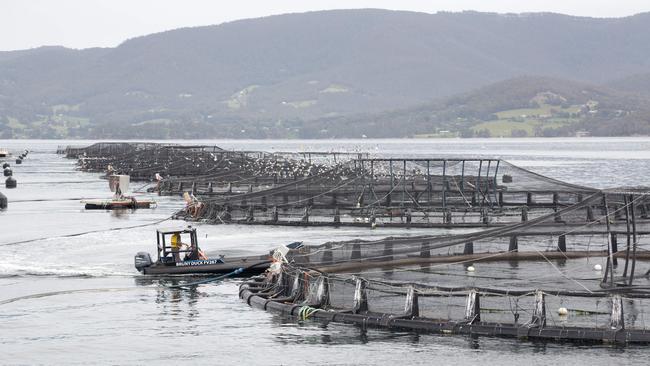Antibiotic use soars at Tassal fish farm
Despite promising to end antibiotic use, Australia’s largest salmon producer increased it by 75 per cent in a year.

Despite promising to end antibiotic use, Australia’s largest salmon producer Tassal increased its use 75 per cent in a year while competitors used a fraction of that amount or none at all.
Tassal Group’s latest sustainability report shows it used 301kg of antibiotics in the 2015-2016 financial year, up from 172kg in the preceding 12 months.
While industry growth might naturally account for some increase, Tassal also recorded a more than 50 per cent rise in grams of antibiotic per tonne of fish produced: from 6g a tonne to 9.83g.
Tassal restated its commitment to ending antibiotic use and said the increase was related to the outbreak of a bacterial infection.
“In the summer of (early) 2016, Tassal’s veterinarian diagnosed a bacterial infection in the 2016-year class (of salmon), which was possibly exacerbated by the hotter summer,” Tassal corporate engagement chief Barbara McGregor said.
“Tassal’s 2017-year class has not been administered antibiotics and has been vaccinated with a four-strain vaccine, which is expected to result in this year class not needing antibiotic treatment.”
There is debate about the use of antibiotics in meat production, with calls for better controls to prevent the practice further undermining human responses to antibiotic treatments.
Tassal confirmed it used the drug oxytetracycline, listed as “highly important” for human health by the World Health Organisation, which argues for greater use of vaccines and other alternatives to feeding farmed animals antibiotics.
The company’s main competitor, Huon Aquaculture, also increased antibiotic feed to salmon, but to a fraction of the same level — from 2.2kg in the 2015 calendar year to 10.2kg in 2016.
The third producer, Petuna Seafoods, said it had not used any antibiotics in fish production since 2014, due to vaccines.
Ms McGregor said the use of oxytetracycline was under a “minor use permit” and complied with a veterinary code of practice. “Comparing the volume of antibiotics used can be misleading, as each different type of antibiotic has a different effective dosage and a minimum duration,” she said.
Fish treated with antibiotics were withheld from harvesting for 90 to 120 days to ensure there was no trace in salmon products. “Tassal takes the use of antimicrobials seriously,” she said.
Huon Aquaculture attributed its far lower antibiotic use to “good environmental management and fish husbandry, very low stocking densities and rigorous biosecurity”.
Tassal also confirmed it had a growing problem with seals, releasing data showing 1689 of the protected mammals were moved from its fish farms from last July to May. Huon and Petuna said they had no relocations during this period, with Huon attributing this to its seal-proof pens.
Environment Tasmania said Tassal’s antibiotic use appeared linked to its higher stocking rates, particularly in Macquarie Harbour, in the state’s west. “So there’s a link between consumer health concerns and the environment degradation we’re seeing from overly intensive stocking,” said strategy director Laura Kelly.




To join the conversation, please log in. Don't have an account? Register
Join the conversation, you are commenting as Logout